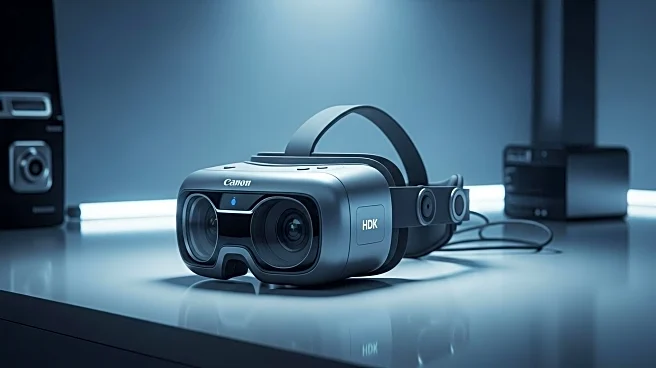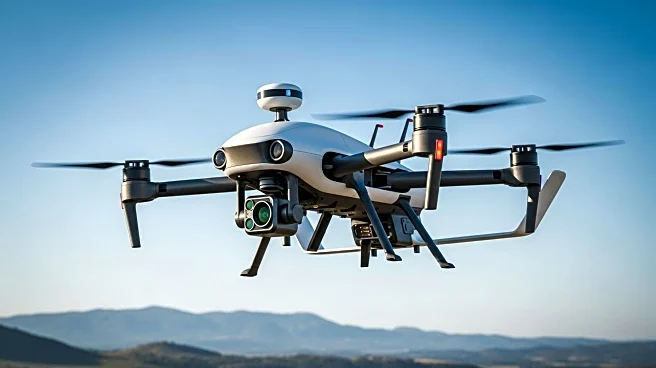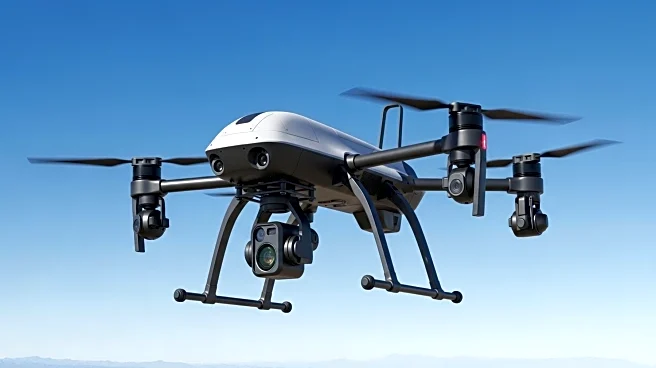What is the story about?
What's Happening?
Anduril Industries has revealed the design and interface of its EagleEye military XR headset, aimed at improving situational awareness for soldiers. Founded by Palmer Luckey, Anduril took over the U.S. Army's AR headset program, IVAS, from Microsoft earlier this year. The EagleEye headset is part of the Soldier Borne Mission Command (SBMC) initiative, which seeks to equip soldiers with advanced XR display systems. The headset features modular capabilities, including transparent AR for daytime operations and VR-style passthrough mixed reality for nighttime use. It integrates Anduril's Lattice software, which autonomously combines data from various sensors to provide a comprehensive view of the battlefield. The system includes spatial audio, radio frequency detection, and ballistic protection, enhancing soldiers' ability to detect and track threats.
Why It's Important?
The introduction of the EagleEye headset represents a significant advancement in military technology, potentially transforming how soldiers interact with their environment. By enhancing situational awareness, the headset could improve decision-making and operational effectiveness on the battlefield. The partnership with Meta and Qualcomm for core XR and AI technology, along with Oakley and Gentex for protective gear, underscores the collaborative effort to bring cutting-edge technology to military applications. This development could lead to increased safety and efficiency for soldiers, as well as a shift in military strategy and tactics.
What's Next?
Anduril has been awarded a $159 million contract by the U.S. Army to develop and deliver hundreds of SBMC prototypes for field testing. The first scaled delivery of the SBMC system is expected in 2027, which will determine the effectiveness of the EagleEye headset in real-world scenarios. The success of this initiative could pave the way for widespread adoption of XR technology in military operations, potentially influencing future defense contracts and technological advancements.
Beyond the Headlines
The EagleEye headset's integration of AI and XR technology raises questions about the ethical implications of autonomous systems in warfare. As AI becomes more embedded in military operations, concerns about accountability and decision-making processes may arise. Additionally, the use of advanced technology in combat could lead to a shift in military training and doctrine, emphasizing the need for soldiers to adapt to new tools and systems.
AI Generated Content
Do you find this article useful?













